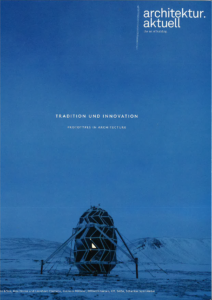Soil
Soil is a natural body consisting of layers (soil horizons) of primarily mineral constituents of variable thicknesses, which differ from the parent materials in their texture, structure, consistence, color, chemical, biological and other physical characteristics.[1]
Sustainable construction requires an integrative thinking of various possible local available materials, skills and know-how. There is a need to enhance vernacular construction and material knowledge to cope with the dramatic need for new urban dwellings. This knowledge must be based on integrative modes of thinking, combining design, construction, building physics, sociology, energy, ecology and economy. If local construction materials and their application could be made available to the wide public in developing territories, local value chains could be build up using a very low-cost and easy to obtain material.[2]
Vaulted earth masonry at the SUDU project in Addis Ababa, Ethiopia (Source: Lara Davis and BLOCK Research Group ETHZ Zuerich)
The countries around the equator belt have almost all a very rich soil, which contains high levels of clay particles. In this light, almost all material excavated from construction sides are a possible source for material needed to build new structures. Might it be “rammed earth”, “earth masonry” or “vaulted earth tile” technology, all of them have the possibility to be low-cost and very efficient. The research will also target the existing multi-criteria environmental constraints of heavy seasonal rains (e.g. drainage details and waterproofing), highly expansive vertisol soils (e.g. foundation details and soil stabilizers), and seismic activity (e.g. connection details and reinforcing).
[1] Peter W. Birkeland, Soils and Geomorphology, 3rd Edition. New York: Oxford University Press, 1999
[2] Dirk Hebel: The Vernacular Rediscovered, in: Re-Inventing Construction, ed. by Ilka and Andreas Ruby, Ruby Press, Berlin 2010






























